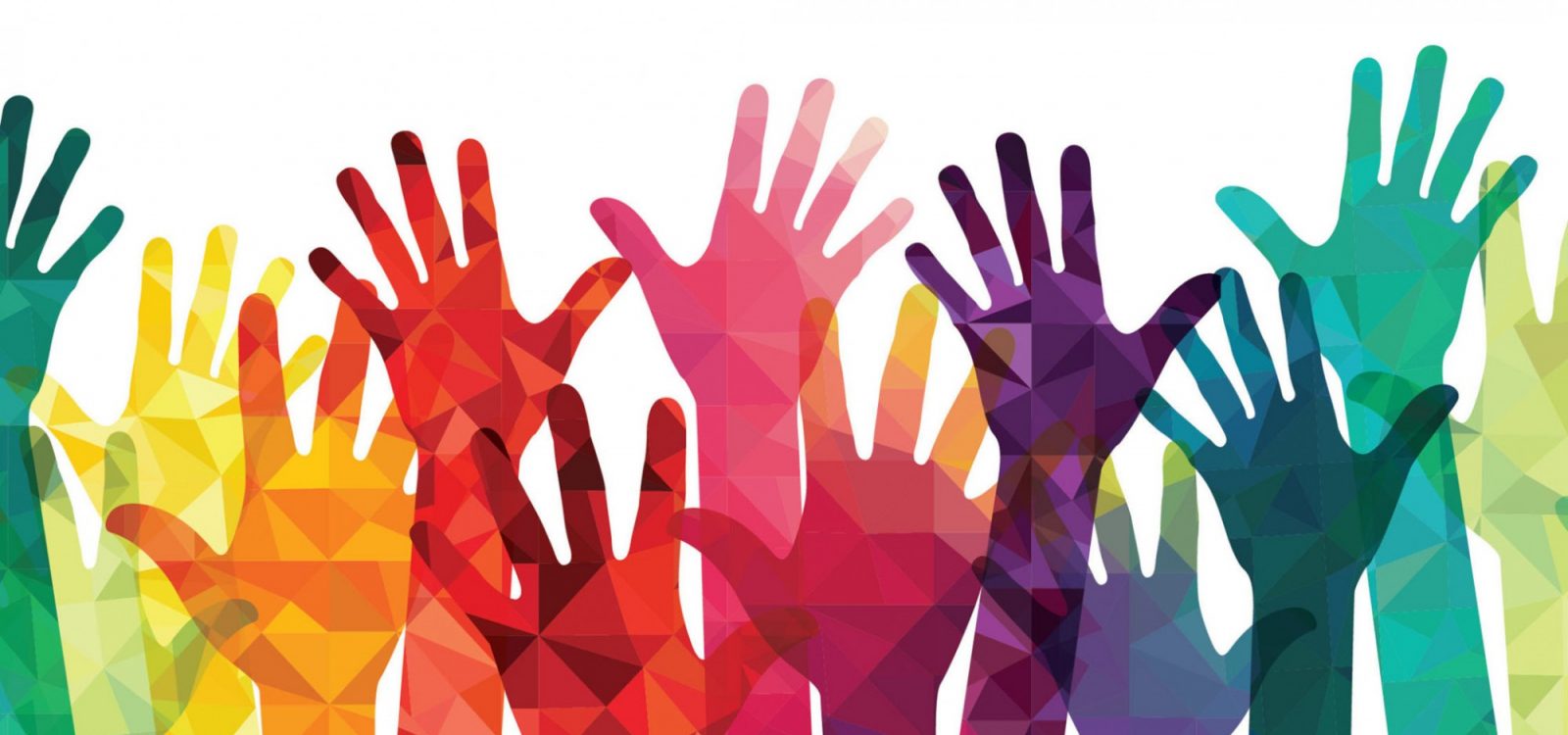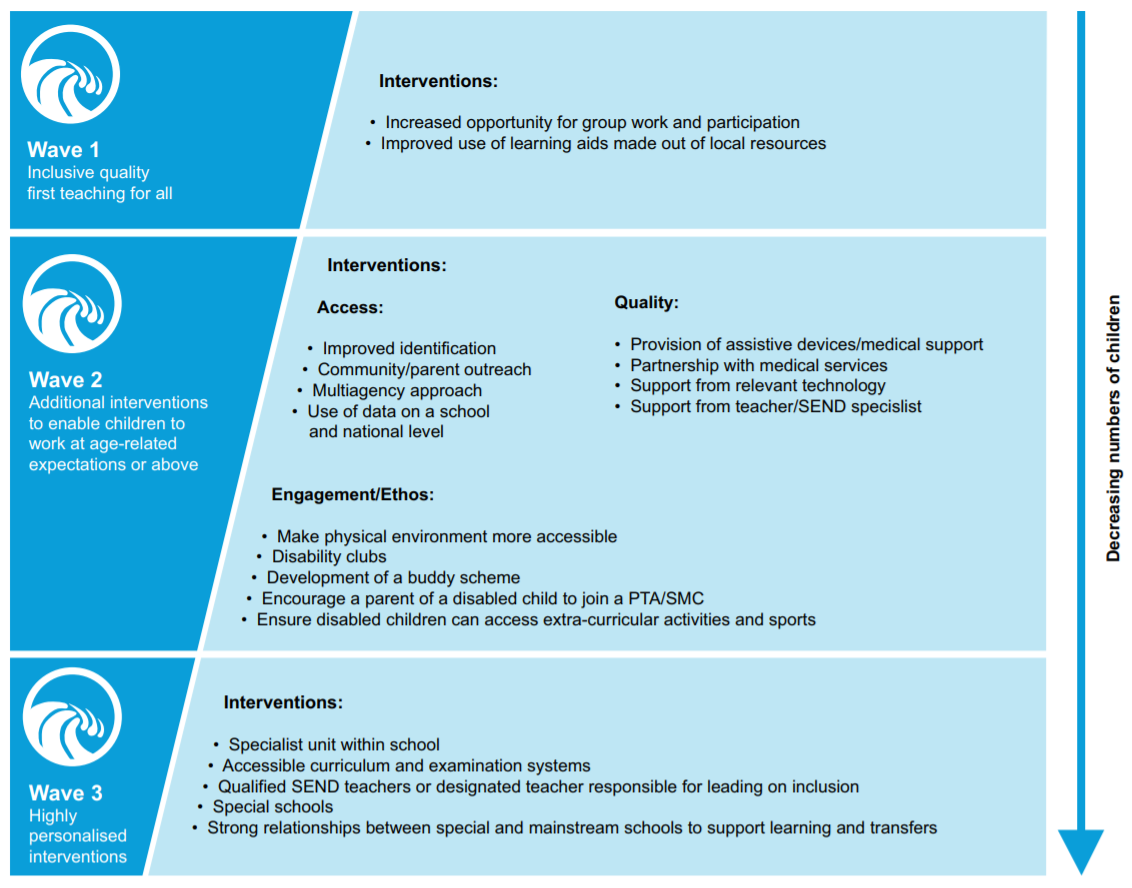Week 1: Thinking about inclusive education
5. A model for thinking about inclusive education
5.2. Focus on the Wave model of intervention
Activity 1.5 What does the Wave model of intervention mean for you?Allow approximately 1 hour for this activity.
Figure 2 Sarton and Smith’s three-level Wave model of intervention. View PDF version Page 2: Are you familiar with the definitions of inclusion and disability the authors give? Is there anything you would add? Pages 3 and 4: How do the ‘3 waves of intervention’ link to ‘universal’, ‘targeted’ and ‘specialist’ provision? Pages 5 and 6: When/how could you make more use of group or paired work in your lessons? What sort of learning aids could you provide? Pages 7 and 8: What are the differences between Wave 1 and Wave 2 intervention? Page 9 to 11: What are the challenges of Wave 3? What changes are needed to make the Wave model work?
|


